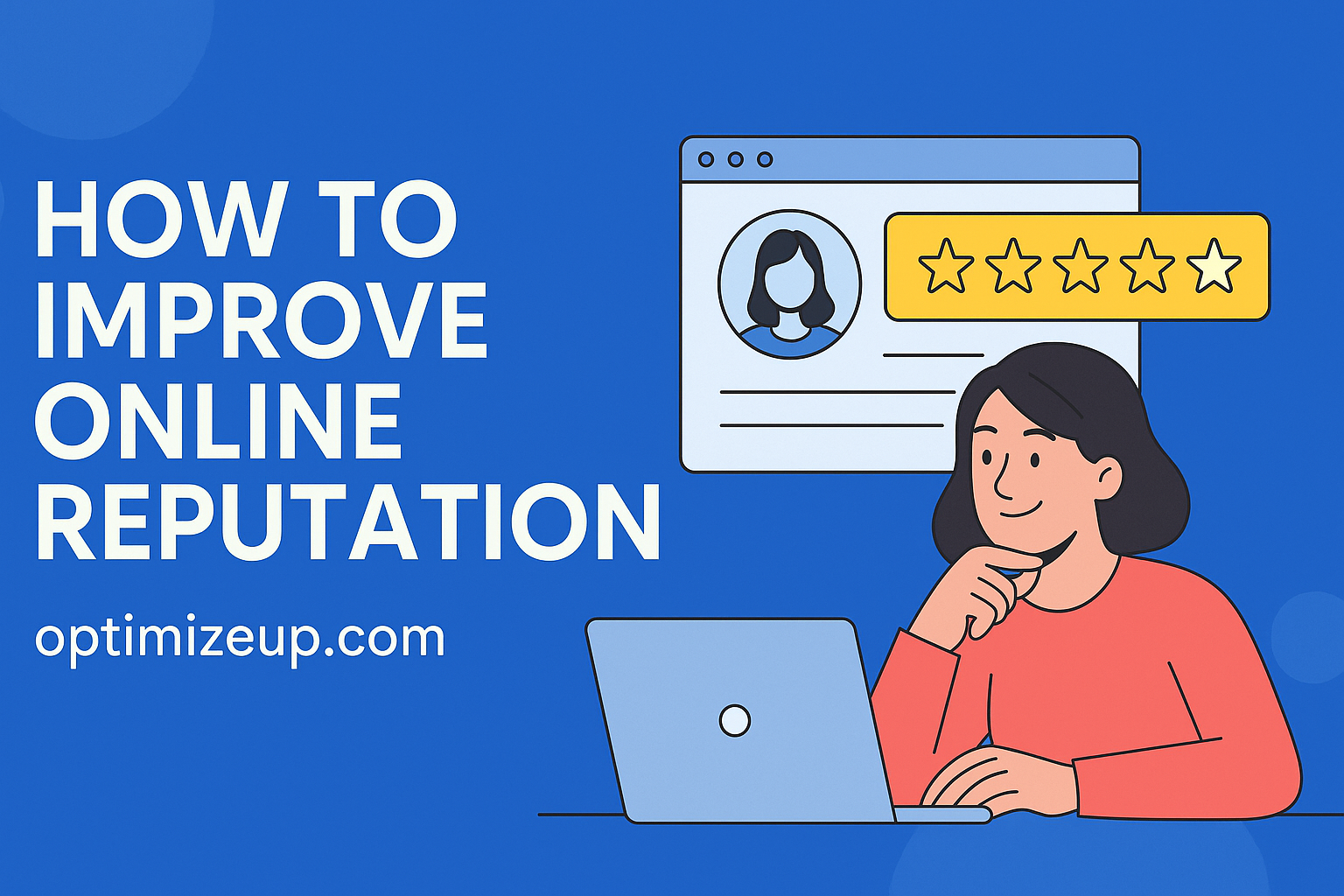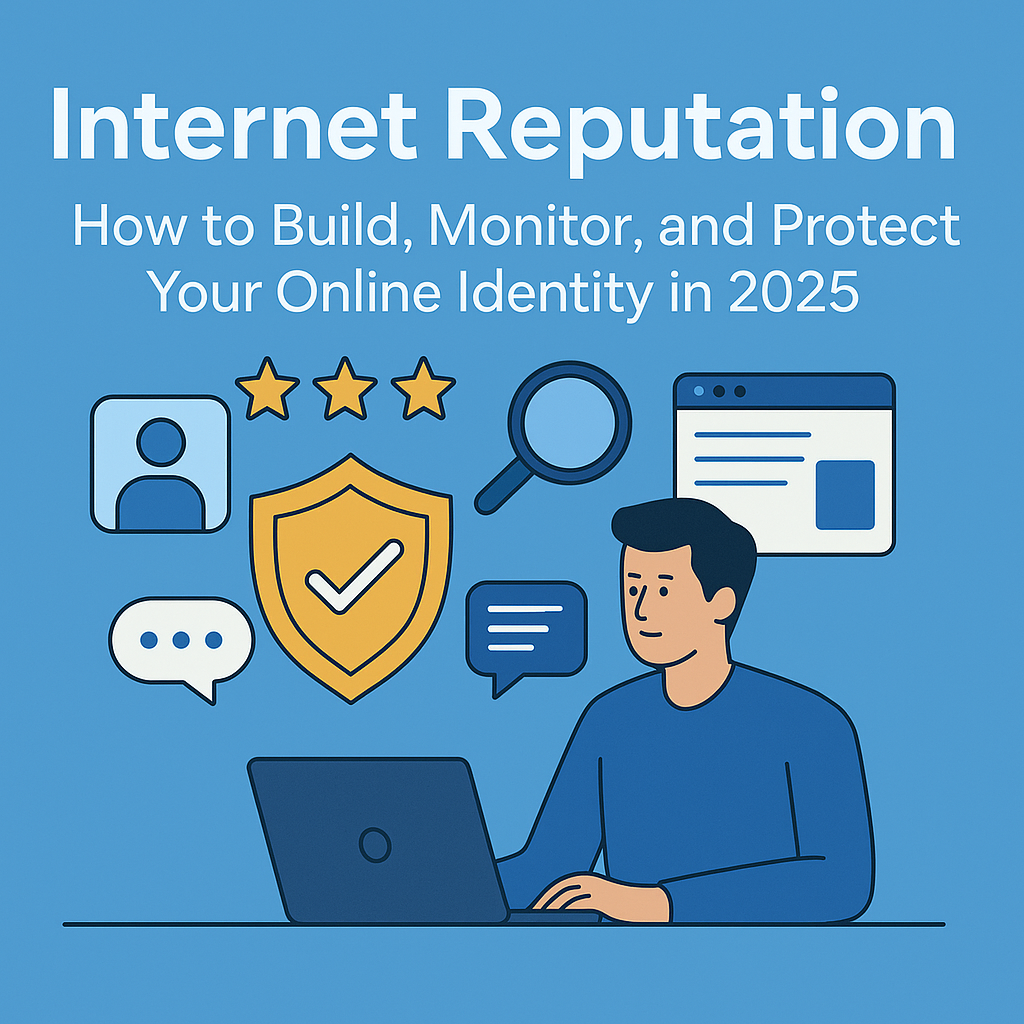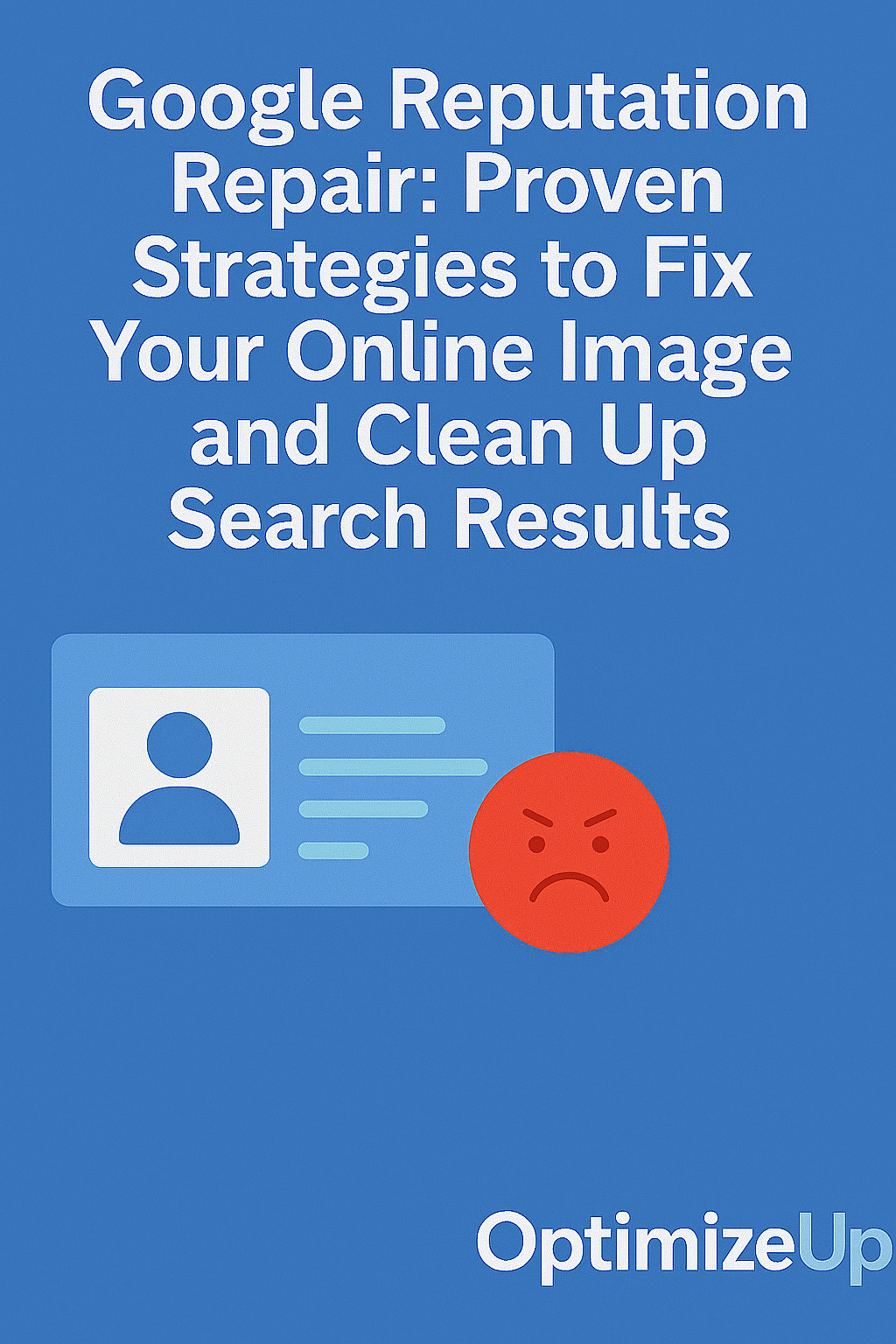Why Online Reputation Matters More Than Ever
Your online reputation shapes how customers, employers, investors, and peers view you. With over 90% of people researching others online before making decisions, a weak or negative online presence can undermine credibility, opportunity, and revenue.
What influences online reputation?
- Search engine results (Google)
- Reviews on platforms like Google, Yelp, Glassdoor, and Trustpilot
- News articles and blog posts
- Social media activity
- Third-party directory listings
Online reputation isn’t just for businesses—it affects individuals, executives, doctors, lawyers, freelancers, and anyone with a name online.
The Building Blocks of a Strong Online Reputation
To improve your online reputation, you must manage what people see, say, and think about you online. That includes:
- Visibility: Positive search results and owned media
- Sentiment: Favorable comments, reviews, and public perception
- Authority: High-quality, trust-building content across platforms
- Responsiveness: Timely engagement with your audience
- Consistency: Unified messaging across all platforms
Building a strong reputation also requires trust signals like HTTPS security, verified social profiles, and positive PR.
How to Improve Online Reputation Step-by-Step
Step 1: Audit Your Current Reputation
- Google your full name and business
- Check Google Images and News tabs
- Evaluate auto-suggest keywords (e.g., “Your Name scam”)
- Look at your top 20 Google results
- Search on Bing and DuckDuckGo for comparison
- Check review sites, forums, and local directories
Use tools like:
Evaluate:
- Brand sentiment (positive, neutral, negative)
- SEO visibility (how you rank for branded keywords)
- Review volume and rating trends
- Social engagement and mentions
Step 2: Claim and Optimize Key Profiles
Own the narrative by controlling your branded properties:
- Google Business Profile
- LinkedIn, Facebook, Instagram, Twitter/X
- Yelp, BBB, Trustpilot
- Personal website or blog
- Wikipedia (if eligible)
Ensure:
- Unified name, logo, and branding
- Schema markup (for rich results)
- Professional tone and compelling CTAs
- High-resolution imagery and consistent bios
Step 3: Suppress Negative Content on Google
If harmful content exists, push it down with better content:
- Publish articles on Medium, Substack, or LinkedIn
- Start a blog and post regularly
- Guest post on industry blogs or local news outlets
- Publish videos on YouTube and optimize with branded keywords
- Get press coverage with Help a Reporter Out (HARO)
- Launch a podcast or contribute as a guest
Boost search results with:
- Internal links to strong pages
- External backlinks from authoritative domains
- Social sharing to increase reach
Step 4: Grow and Manage Online Reviews
Reviews are powerful social proof:
- Ask happy customers to leave feedback
- Use SMS/email campaigns with review requests
- Make review generation part of your post-service process
- Respond to all reviews—positive and negative
- Flag fake or defamatory reviews for removal
Enhance your review profile by:
- Providing excellent service (first and foremost)
- Using feedback as testimonials on your website
- Embedding Google Reviews using API widgets
Tools to streamline:
Step 5: Create Authority-Building Content
People trust brands and individuals who show up with value. Create:
- Educational blog posts
- FAQs answering common industry questions
- How-to videos or tutorial content
- Case studies and testimonials
- Visual content like infographics and charts
- Downloadable resources (eBooks, checklists)
- Press releases about milestones or CSR activity
Bonus: Share content on social media and email lists to amplify reach. Repurpose blog content into video, reels, or slides.
Step 6: Monitor and Protect Your Reputation
Reputation is ongoing. Set up:
- Google Alerts for your name or business
- Social listening dashboards with tools like Hootsuite or Sprout Social
- Weekly reports on review activity and brand mentions
Address issues before they escalate:
- Respond to customer feedback within 24–48 hours
- Publicly correct misinformation with facts and calm tone
- Prepare statements and FAQs for anticipated crises
Set up brand monitoring for:
- Executive team members
- Products and services
- Company name + keywords like “reviews,” “scam,” “feedback”
Step 7: Collaborate With Influencers and PR Networks
- Partner with influencers who align with your values
- Sponsor relevant podcasts or thought leaders
- Submit guest appearances or interviews to industry publications
- Use services like Qwoted or MuckRack to connect with journalists
Strategic PR increases visibility and improves perception. Consider:
- Publishing op-eds
- Hosting community events
- Being active in professional associations and forums
Common Mistakes to Avoid
- Ignoring negative reviews or deleting comments
- Buying fake followers, reviews, or links
- Using inconsistent branding across platforms
- Failing to monitor new mentions or auto-suggestions
- Reacting emotionally to criticism instead of responding professionally
- Not tracking progress with KPIs like search result composition, average review score, or branded traffic
Platforms That Shape Online Reputation
Review Platforms
- Google Business Profile
- Yelp
- Trustpilot
- Glassdoor
- Healthgrades, RateMDs (for medical professionals)
- Avvo, Justia (for legal professionals)
Search Engines and Directories
- Google, Bing, DuckDuckGo
- Crunchbase, AngelList, ZoomInfo, Manta
- Better Business Bureau, Yellow Pages, Foursquare
Social Media
- Twitter/X
- Reddit and Quora
- TikTok and YouTube Shorts
News and Media Outlets
- Local newspapers
- Industry blogs
- Syndicated press release networks (e.g., EIN News, PRWeb)
Optimized Up Can Help You Build a Reputation That Reflects Your True Value
At Optimized Up, we:
- Audit and analyze your current online footprint
- Create personalized content strategies
- Remove or suppress harmful results legally and ethically
- Monitor and manage review campaigns
- Build long-term authority through media and search
- Support individuals and companies with transparent, strategic support
Let’s improve your reputation now—our team is ready to restore your image and unlock future opportunities.
Frequently Asked Questions
Most campaigns show progress in 30–90 days. Major results may take 3–6 months depending on complexity.
Sometimes. If it violates terms or law, it can be removed. Otherwise, suppression with better content is the best approach.
Yes—always. Be polite, factual, and solution-oriented. It shows maturity and customer care.
Yes. Online reputation impacts job offers, sales, partnerships, and trust. It’s an investment in your credibility.
If you see negative search results, declining leads, or feedback from peers, it may be time to assess and act.
Track metrics like:
Volume of positive vs. negative search results
Review score averages
Brand mentions and sentiment over time
Branded search volume
MLA Citations:
Martin, Alexis. Reputation Recovery: A Practical Guide to Managing Online Perception. TrustEdge Press, 2024. “Online Reputation Management: The Definitive Guide.” Search Engine Journal, 2024, www.searchenginejournal.com. “How to Remove and Suppress Negative Search Results.” Reputation X Blog, 2024, blog.reputationx.com. “Impact of Online Reviews on Business.” BrightLocal Survey, 2024, www.brightlocal.com.





